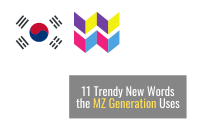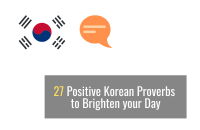This guide covers the basics of the Korean language.
It will show you the differences between Korean vs English.
A native Korean and English speaker collaborated to make sure it’s accurate.

Quick Summary
- Korean has some cool idioms that are fun to use. (“nunchi“, or intuition, is a classic)
- It’s also so unique that linguists didn’t know how to categorize it until recently.
- Korean was part of the Altaic family along with Mongolian and Japanese for many years.
- Korean now belongs to its own “Koreanic family” of languages.
Korean VS English
1. Alphabet
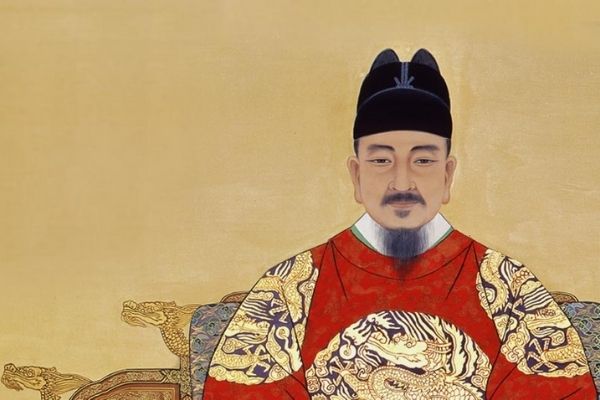
Fortunately, the Korean language has an alphabet invented by King Sejong.
It’s a bit different from English. On the plus side, it’s more logical and consistent, since a team of scholars was involved in the creation process. English, to quote James D. Nicholl,
“… has pursued other languages down alleyways to beat them unconscious and rifle their pockets for new vocabulary.”
This has resulted in English spelling and pronunciation becoming confusing over the centuries.
It also makes Romanization of English words into Korean difficult.
Here’s the Korean alphabet in all its glory.
Korean Alphabet Chart

There are many sounds in Korean that don’t exist in English and vice versa.
This can be confusing since the rules of Romanization created in 1972 continue to be changed.
It’s important to use the current standard of Romanization.
Learn the Most Common Korean Words and Phrases
Example: Sinchon, Sincheon and Sicheong are all different places. They’re especially hard to keep straight if you’ve never been to Korea.
Keep this in mind when translating addresses in contracts, because the wrong name or address can invalidate everything.
To make matters more interesting, North Korea uses Hangeul a little differently.
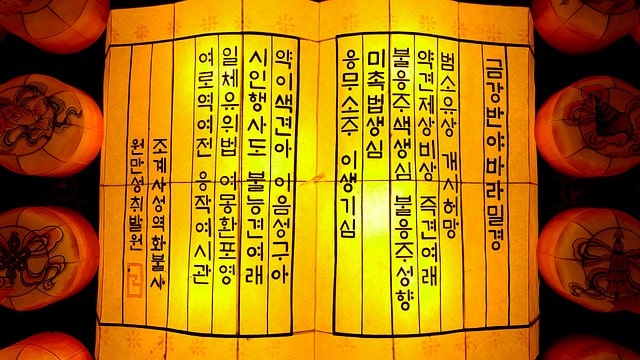
2. Three Numeral Systems
Korean uses native Korean numbers and Sino-Korean numbers, which are based on Chinese.
There are also ordinal numbers that stem from the Korean system.
| Numeral | Sino-Korean | Native Korean | Ordinal |
| 0 | 공 (gong) 영 (yeong) 제로 (jero) | ||
| 1 | 일 (il) | 하나 (hana) | 첫째 (cheot-jjae) |
| 2 | 이 (ee) | 둘 (dul) | 둘째 (dul-jjae) |
| 3 | 삼 (sam) | 셋 (set) | 셋째 (set-jjae) |
| 4 | 사 (sa) | 넷 (net) | 넷째 (net-jjae) |
| 5 | 오 (o) | 다섯 (dah-seot) | 다섯째 (dah-seot-jjae) |
| 6 | 육 (yuk) | 여섯 (yeo-seot) | 여섯째 (yeo-seot-jjae) |
| 7 | 칠 (chil) | 일곱 (il-gop) | 일곱째 (il-gop-jjae) |
| 8 | 팔 (pal) | 여덟 (yeo-deol) | 여덟째 (yeo-deol-jjae) |
| 9 | 구 (gu) | 아홉 (ah-hop) | 아홉째 (ah-hop-jjae) |
| 10 | 십 (ship) | 열 (yeol) | 열째 (yeol-jjae) |
| 11 | 십일 (ship-il) | 열하나 (yeol-hana) | 열한째 (yeol-han-jjae) |
| 12 | 십이 (ship-ee) | 열둘 (yeol-dul) | 열둘째 (yeol-dul-jjae) |
| 13 | 십삼 (ship-sam) | 열셋 (yeol-set) | 열셋째 (yeol-set-jjae) |
| 14 | 십사 (ship-sa) | 열넷 (yeol-net) | 열넷째 (yeol-net-jjae) |
| 15 | 십오 (ship-o) | 열다섯 (yeol-dah-seot) | 열다섯째 (yeol-dah-seot-jjae) |
| 16 | 십육 (ship-yuk) | 열여섯 (yeol-yeo-seot) | 열여섯째 (yeol-yeo-seot-jjae) |
| 17 | 십칠 (ship-chil) | 열일곱 (yeol-il-gop) | 열일곱째 (yeol-il-gop-jjae) |
| 18 | 십팔 (ship-pal) | 열여덟 (yeol-yeo-deol) | 열여덟째 (yeol-yeo-deol-jjae) |
| 19 | 십구 (ship-gu) | 열아홉 (yeol-ah-hop) | 열아홉째 (yeol-ah-hop-jjae) |
| 20 | 이십 (ee-ship) | 스물 (seu-mul) | 스물째 (seu-mul-jjae) |
| 30 | 삼십 (sam-ship) | 서른 (seo-reun) | 서른째 (seo-reun-jjae) |
| 40 | 사십 (sa-ship) | 마흔 (mah-heun) | 마흔째 (mah-heun-jjae) |
| 50 | 오십 (o-ship) | 쉰 (shin) | 쉰째 (shin-jjae) |
| 60 | 육십 (yuk-ship) | 예순 (ye-sun) | 예순째 (ye-sun-jjae) |
| 70 | 칠십 (chil-ship) | 일흔 (il-heun) | 일흔째 (il-heun-jjae) |
| 80 | 팔십 (pal-ship) | 여든 (yeo-deun) | 여든째 (yeo-deun-jjae) |
| 90 | 구십 (gu-ship) | 아흔 (ah-heun) | 아흔째 (ah-heun-jjae) |
| 100 | 백 (baek) | 온 (on) | 온째 (on-jjae) 백째 (baek-jjae) |
| 200 | 이백 (ee-baek) | 이백째 (ee-baek-jjae) | |
| 300 | 삼백 (sam-baek) | 삼백째 (sam-baek-jjae) | |
| 400 | 사백 (sa-baek) | 사백째 (sa-baek-jjae) | |
| 500 | 오백 (o-baek) | 오백째 (o-baek-jjae) | |
| 600 | 육백 (yuk-baek) | 육백째 (yuk-baek-jjae) | |
| 700 | 칠백 (chil-baek) | 칠백째 (chil-baek-jjae) | |
| 800 | 팔백 (pal-baek) | 팔백째 (pal-baek-jjae) | |
| 900 | 구백 (gu-baek) | 구백째 (gu-baek-jjae) | |
| 1,000 | 천 (cheon) | 즈믄 (jeu-meun) | 천째 (cheon-jjae) |
| 2,000 | 이천 (ee-cheon) | 이천째 (ee-cheon-jjae) | |
| 3,000 | 삼천 (sam-cheon) | 삼천째 (sam-cheon-jjae) | |
| 4,000 | 사천 (sa-cheon) | 사천째 (sa-cheon-jjae) | |
| 5,000 | 오천 (o-cheon) | 오천째 (o-cheon-jjae) | |
| 6,000 | 육천 (yuk-cheon) | 육천째 (yuk-cheon-jjae) | |
| 7,000 | 칠천 (chil-cheon) | 칠천째 (chil-cheon-jjae) | |
| 8,000 | 팔천 (pal-cheon) | 팔천째 (pal-cheon-jjae) | |
| 9,000 | 구천 (gu-cheon) | 구천째 (gu-cheon-jjae) | |
| 10,000 | 만 (mahn) | 골 (gol) | 만째 (mahn-jjae) |
| 20,000 | 이만 (ee-mahn) | 이만째 (ee-mahn-jjae) | |
| 30,000 | 삼만 (sam-mahn) | 삼만째 (sam-mahn-jjae) | |
| 40,000 | 사만 (sa-mahn) | 사만째 (sa-mahn-jjae) | |
| 50,000 | 오만 (o-mahn) | 오만째 (o-mahn-jjae) | |
| 60,000 | 육만 (yuk-mahn) | 육만째 (yuk-mahn-jjae) | |
| 70,000 | 칠만 (chil-mahn) | 칠만째 (chil-mahn-jjae) | |
| 80,000 | 팔만 (pal-mahn) | 팔만째 (pal-mahn-jjae) | |
| 90,000 | 구만 (gu-mahn) | 구만째 (gu-mahn-jjae) | |
| 100,000 | 십만 (ship-mahn) | 십만째 (ship-mahn-jjae) | |
| 1,000,000 | 백만 (baek-mahn) | 백만째 (baek-mahn-jjae) | |
| 10,000,000 | 천만 (cheon-mahn) | 천만째 (cheon-mahn-jjae) | |
| 100,000,000 | 억 (eok) | 잘 (jahl) | 억째 (eok-jjae) |
| 1,000,000,000 | 조 (jo) | 울 (ul) | 조째 (jo-jjae) |
This is similar to English using Hindu-Arabic numbers as well as Roman numerals in rare cases such as Superbowls and Rocky movies.
However, the Korean number systems are used daily in different situations.
For example, Korean numbers are used for counting people, objects and age; while Chinese-based numbers are for counting money, dates, addresses and phone numbers.
Beyond 100, Korean numbers are not often used and Sino-Korean numbers take over.
Using the incorrect number system sounds strange to Koreans.
Also, understanding number systems provides very helpful context clues when translating into English.
One can predict the type of object being counted when it’s not specified in the source text, which happens frequently in Korean.
3. Slang and Abbreviations
Trends are a big deal in Korea.
This extends to vocabulary since there are many ways to play with words in Korean.
Example: when Koreans learn vocabulary, they remember the opposite word.
This enters into their vernacular with expressions like 금수저 (gold spoon) or 흙수저 (dirt spoon). Which are the equivalent of being born with a silver spoon in one’s mouth or not.
아라 or “arah” is an abbreviation of 아이라인 or “eye line”.
It’s very difficult for a non-native Korean speaker to understand these abbreviations, because 아라 can be a girl’s name as well.
The usage of newly developed slang becomes ubiquitous almost instantaneously given the connectivity and homogeneity of the people.
It’s important to keep up with these words, especially when translating marketing copy.
4. Sentence Structure
While English sentence structure is Subject-Verb-Object, Korean sentence structure is usually Subject-Object-Verb, with some exceptions.
Example: “남자가 고양이를 보았다” which is literally, “man cat saw”.
We would translate this to “The man saw a cat.”
This can cause confusion regarding who is doing what to whom when translating.
5. Advanced Sentence Structure
There are also situations where you are dealing with sentences with multiple objects, which are common.
As stated above, the order can be switched even further with the object coming before the subject.
Example: 준호가 신문을 본다, “Joonho newspaper reads” which can also be acceptably written as 신문을 준호가 본다, “newspaper Joonho reads”.
In these situations it’s very important to pay attention to the object markers and the context of the sentence.
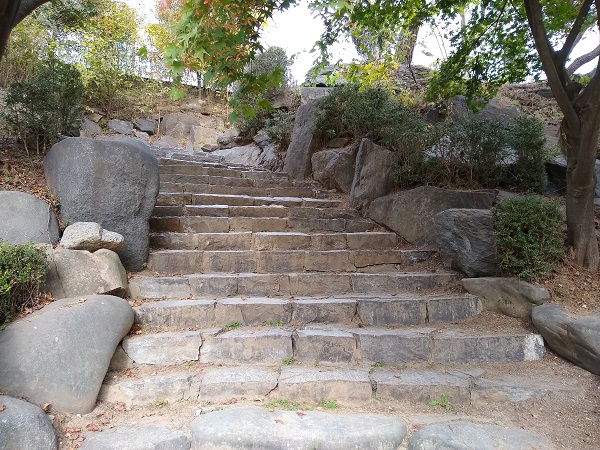
6. Multiple Objects
There are times when there’s more than one object in a sentence.
Example, 영미는 짜장면을 세 그릇을 주문했다, “Yeongmi Jjajangmyeon (black bean sauce noodle) three bowls ordered.”
This makes little sense in English, and should be translated to, “Yeongmi ordered three bowls of black bean sauce noodles.”
It’s important to be familiar with these situations, so you can preserve their meaning.
7. Use of Subjects and Objects
Often times the subject or object is left out of a sentence, making it confusing for English speakers.
In fact, ellipsis, or omission of a subject or object occurs 69.22% of the time for subjects, 13.78% of the time for objects in Korean.
Ellipsis occurs for 31.5% of subjects, 7.67% of objects in English.
The reason for this is Korean is focused more on the verb ending due to the use of honorifics.
The verb is the center of Korean sentences whereas in English the noun is the center of a sentence.
Example: It would not be uncommon to see “고양이를 보았다” or “cat saw”.
This sentence is confusing because we don’t know who the subject is.
It would be necessary to look at the context to figure it out.
The verb ending tells us this is a plain statement where someone saw a cat, and who it was is not important.
A mix up in the subject and object can alter the meaning of a sentence greatly and lead to misunderstandings.
8. Adjective Use
Koreans use a variety of adjectives.
They often use multiple ones in a sentence that sometimes become redundant.
If all redundant adjectives were translated in the following sentence, 수분감이 풍성하고 촉촉한 느낌의 피부보습 모이스춰라이징 크림, it would be “a skin hydrating moisturizing cream with rich moisture and a moist feeling”.
It’s important to choose the key adjectives in the previous example in order to preserve meaning and not sound ridiculous.
Using this example, “a skin hydrating moisturizing cream with a rich moisture and a moist feeling.” could be a potential solution.
9. Adjective Variety
There are many different versions of adjectives that are commonly used.
Example: even a simple word like “Yellow” could be “노랗다”, “노르스름하다“, “누렇다“, “누리끼리하다“, “노릇노릇하다“, “누리팅팅하다“ or “샛노랗다“.
These are used depending on the situation to elicit different emotions.
Example: 노릇노릇하다 is normally used to describe the color of food.
샛노랗다 is used for the color of flowers or clothes.
Mixing these up will change the tone of the sentence and potentially sound awkward.
10. Counting System
While Koreans write numbers with commas between the 1000’s digits like in English, they express numbers differently.
In English, numbers are divided by 1,000’s and follow the same pattern with 3 zeros (i.e. 1,000 = one thousand, 100,000 = one hundred thousand, etc.).
In Korean, they rise by 4 zeros, starting with 10,000 (만/mahn), 100,000,000 (억/eok) 1,000,000,000,000 (조/jo).
Example: Korea has a recorded history of 5,000 years, but call it “ban mahn nyeon” or “half of 10,000 years”.
In regards to money, 100,000 (one hundred thousand) would be called ship mahn or ten ten thousand in Korean.
This is further complicated by the exchange rate between the Won and the US Dollar, which is roughly 1,000 to 1.
10억 or one billion won is equal to roughly one million usd.
Being off by a zero can create major issues down the road, especially when translating financial documents.

11. Konglish
Korean has many Konglish words, which are English words with completely different meanings.
The most commonly used example being, “fighting”, which is actually a word of encouragement or a cheer.
Examples:
- Steering wheel would be 자동차 핸들 (car handle).
- Commercial would be CF광고 (CF advertisement).
- Trench coat would be 버버리 or 바바리 (Burberry).
- Stainless Steel would be 스텐 (stain).
- Rest and relaxation would be 힐링 (healing).
A recent example is the tourism slogan for Seoul, which was previously “Hi Seoul” and is currently, “I.Seoul.You”.
This was selected by a panel of linguists, government officials and private citizens.
The slogan for the Korea Tourism Board was “Korea, Sparkling” then “Imagine Your Korea”. Now they’ve settled for the confusing, “Visit Korea for Me“.
In the past, “미팅 (meeting)” could mean “blind date”, which is confusing at work.
“약속 (Appointment or promise)” is usually used to denote plans or even meetings.
Recently, more Koreans are using “meeting” to actually mean a business meeting, while still using it at times to refer to blind dates, which are very common in Korea.
FYI, Koreans use “소개팅 (introduction-ting)” for blind dates now.
There are many examples of Konglish and it’s important to either consult a Korean or double check the meanings of seemingly English words.
12. Honorifics
Honorifics take a lifetime to master and are the foundation of Korean language and culture.
There are two main categories of speech, 존댓말 (jondaemal) and 반말 (banmal), or higher and lower levels.
Within these two categories, there are seven levels of speech, with only four being used today:
- 하십시오 (Hashipshio) – polite formal
- 해요 (Haeyo) – polite for daily use
- 해라 (Haera) – plain for speaking among friends
- 해 (Hae) – an intimate style reserved for close friends or children
The different verb endings are a remnant of the time when Korea had a rigid class system. Now they’re mainly for your age and title.
You’re either higher or lower than the person you are speaking to.
You can also denote your level with verb endings.
The rules are too complicated to cover here, but there are two main issues you should be aware of:
- how to address someone
- how to refer to oneself
You can raise the level of the person you’re speaking to and lower the level of yourself depending on the pronoun, object and verb you use.
As you can imagine, using these forms incorrectly will greatly damage the credibility of your translation.
13. Advanced Honorifics
To make matters more confusing, when speaking to someone about someone else, you must calculate the relative difference in position between the person you’re referring to and the person you are speaking to.
This is known as 압존법 or “relative honorifics”.
The National Institute of Korean Language is trying to convince people not to use 압존법 since it’s a remnant of Japanese colonization.
However, it’s still absolutely vital in many Korean workplaces.
Example: You must change the postpositional particle and verb if the person you are speaking to is a higher position (age, title, etc.) than the person you are referring to.
“부장님, 이 과장님은 지금 자리에 안 계십니다” means, “General Manager, Manager Lee is not at his desk now”, with the bolded parts elevating the Manager higher than the General Manager, even though they both are in a higher position than you.
In this situation, your General Manager would scold you by saying, “So, Manager Lee is higher than me?”
If you’re off at all, you’ll look less educated (i.e. your parents are ignorant/didn’t bother teaching you etiquette) or even disrespectful.
Most Koreans perfect this while working at their first company job as it’s confusing even for them.
14. Sentence Length
The quality of a writer in Korea is based on how long their sentences are.
When translating into English, it’s important to know where to break sentences with multiple clauses to preserve meaning and continuity.
Likewise, it’s important to extend the length of sentences by combining them when translating from English to Korean in order to sound intelligent.
For example, “이 계획에 의하면, 비영리 사단법인인 우리글진흥원을 통해 구에서 발행하는 ‘중랑구소식’을 비롯한 생활정보문, 홍보물 등을 감수토록 하였으며, 직원들의 글쓰기 능력을 키워줄 ‘공공문장 바로 쓰기’ 특강을 개설할 예정이다.”, is one sentence of an article from Herald Corporation.
It has 3 clauses and the subject isn’t even mentioned once.
One would have to guess from the context that it’s about a “revised plan”.
Again, it helps to have a Korean check your work when tackling sentences of this length.
15. Spacing
A misplaced space would equal a typo in English.
However, it can alter the meaning of a word or sentence in Korean.
For example, the word “안심하다” means “it’s a relief”, however, “안 심하다” with a space means “it’s not severe”.
To the untrained eye, both examples look acceptable in a sentence, even though they mean different things.

16. Units
Pyeong is a uniquely Korean measurement unit for area that is approximately 3.3 ㎡.
It’s mostly used for the measurement of real estate.
Needless to say, it’s important not to mix up units of measurement in a document.
17. Singular and Plural Nouns
While there’s a way to denote singular and plural nouns, they’re not used often by Koreans.
Whether a noun is meant to be singular or plural is something that Korean speakers can decipher.
18. Verbs and Adjectives
The difference between verbs and adjectives is blurred in Korean.
Adjectives can be used as verbs without adding the “be” verb.
A commonly used example of this is 바쁘다 (busy) being used in a sentence as “바빠요”, which means, “I’m busy”.
There’s no separate verb or subject in the sentence, but it’s built into the adjective.
19. Gender Specific Pronouns
Korean doesn’t use gender specific pronouns equivalent to “he” and “she”.
This makes it difficult to know which pronoun to use in English.
Context is key in understanding whether a male or female is being referenced.
I still struggle with this while Koreans naturally don’t.
20. Kinship Terms
Korean has special kinship terms for men and women based on relative age. There are five common ones that shape relationships:
These terms determine relationships and obligations. They’re also very fun to use and are featured heavily in K-pop lyrics.

21. Definite and Indefinite Articles
Korean doesn’t use articles such as “a” and “the”.
This makes it challenging to choose the proper article in English when translating from Korean.
Especially when it’s unclear whether the noun is a proper noun or has been referred to in the text.
22 Phonology
Korean is a syllable-timed language, unlike English, which is a stress-timed language.
This means that all syllables receive equal stress and are spoken with flat intonation.
Korean might sound somewhat robotic to English-speakers.
23. Critical Typos
Typos in English often make the intended word gibberish.
In Korean, however, words are formed with syllable blocks of either:
- one consonant + one vowel (가)
- one consonant + one vowel + one consonant (각)
- one consonant + one vowel + one double consonant (깍)
Each syllable block can form a word on its own and often has multiple meanings.
If either the consonant or vowel is off, the meaning of the word can change while still having meaning.
Example: 가지, 거지 and 까지 are all different by one consonant or vowel, but mean “eggplant”, “beggar” and “until” respectively.
It takes a keen eye and deep understanding of the language to recognize the difference between typos and intended words.
This is especially important to focus on when texting.

24. Subject-Verb Agreement
Korean sentences don’t require the verb to correspond in number with the subject.
For example in English, “they like” does not include the “s” while “he likes” adds the “s”; whereas Korean verbs are not conjugated in agreement with the subject.
Due to this, translation from Korean to English can be a bit trickier.
It’s also a reason why it takes ESL students longer to remember the -s ending in the third person singular present simple tense.
25. Past Tense
Koreans usually reference the past through a single past tense.
This makes it difficult to choose the right tense from several possibilities (present perfect, past perfect continuous, past simple etc.) when translating into English.
26. Self vs Situation
Korean doesn’t normally reference the “self” in sentences.
The actual situation is more important than where the person fits into it.
An example of this is when asking for directions in Korean, one would say, “여기 어디에요?”, or “where’s here?”.
While in English, one would normally ask, “where am I?”.
It would be considered childish to ask in Korean, “내가 어디에요?” or “where am I?”.
Due to this, it’s easy for native Koreans to recognize Gyopos (overseas Koreans) when they speak, since they tend to violate this norm.
27. Addressing Others
In English, we take for granted being able to address someone directly with the word “you”.
While in Korean, you can use the word “you”, but will be considered very impolite if addressing anyone other than your friends or young children.
There is a sophisticated etiquette of referring others by either their job title, name of their first born, relative age or relationship to you.
28. Korean Onomatopoeia
Korean animal and object sounds are very different and fun to learn. Here’s a guide to the most common Korean onomatopoeia.
Did we miss anything?
The Korean language takes time to learn, but is worth it.
I’ve met many people who’ve learned it as a second language.
Let us know your favorite part of the Korean language in the comments!
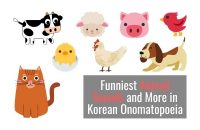
![137 Konglish Words You Shouldn’t Live Without [with Examples]](https://linguasia.com/wp-content/uploads/137-Konglish-Words-You-Shouldnt-Live-Without-200x130.png)

